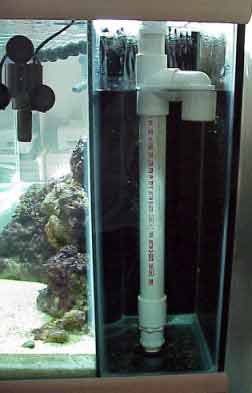Here's a run down of the amount I paid for this system, with suggestions on how you can reduce costs even further.
Tanks - $440 - I was able to get the Rubbermaid stock tanks at a local farming coop for $70 and $80 for the 50-gallon and 100-gallon tanks, respectively. I think you'd need 3 IBC units to make something similar out of IBC, so that wouldn't save much cost. However I understand that it's possible to get 55-gallon barrels for free from local beverage processing plants. The downside of 55-gallon barrels is you'll have to spend more on plumbing, you'll have a lot more cutting to do, and the end result will look like hack-sawed plastic. But free is free.
Hoop house - $100 - If you use pressure-treated landscape lumber for the base, 3 mil sheeting, and 1/2" EMT conduit, the total price rolls in at around $100. You could slightly reduce costs for the frame by using PVC. Or you can decide you don't need protection at all, if you're in a climate that doesn't require protection from excess sun, rain, or cold.
Pumps and timer - $110 - I was able to find my 800 gph pump at a local hydroponics store for $60, and you can get an air pump sufficient to aerate 100 gallons for $30. Tubing and air stones round the total amount upwards to $100. One option is to dispense with the air pump, if you pump some of your water over the surface of the fish tank, oxygenating the water the way a pond fountain does. There are ways to use wind power to drive something like a
rope pump, but I don't think that is cheaper than an electric pump (though awfully fun to make). I do use a timer to turn my water pumps off at night, which is another $5-10.
Plumbing - $100 - I used 3" pipe for media guards (4 feet), 2" pipe for bells (4 feet), 1" pipe to connect the tanks (10 feet), and lots of 3/4" pipe for upstands and drains (10 feet). Add in the elbows and adapters, caps, and o-rings and you're up around $40. I used garden hose that is drinking water safe to carry water from my sump tank to the grow beds, so two 50 foot lengths, adapters, and Y splitters ran me $60. You could reduce cost by having a simple standpipe and using a timer to turn the water on intermittently, though your water pump capacity may need to increase. As for plumbing between the sump and the beds, you could plumb that with PVC pipe and elbows. If you find a cheaper way to do it, after tallying all the costs, go for it.
Grow bed supports - $60 - I used cinder blocks (16 @ $2.50) and 2x6 planks (4 @ $5) to support the grow beds. If you are able to dig your tanks down into the ground, you can cut back on the number of cinder blocks required. If you can find such materials second hand, that'd be great.
Floating Raft - $40 - I was able to get a 2'x8' sheet of 2" extruded polystyrene for $15, and the 2" net pots cost $0.39 apiece. I suppose you could come up with some kind of wood float supported on empty water bottles and used (drilled) plastic containers.
Media - $ to $$$ - If you've got a pile of 3/4 gravel out back, this could be free. If you fill all four grow beds with Hydroton (@ $40 per 50L bag), you could be spending about $600.
So the basic system as I've got it here (including a floating raft bed) is $850. I love Hydroton, but I know of a friend who got an entire truckbed full (1250L) of expanded shale for under $60. So you can create an extended-season, vegetable-growing, fish growing water storage system for under $1000.





























